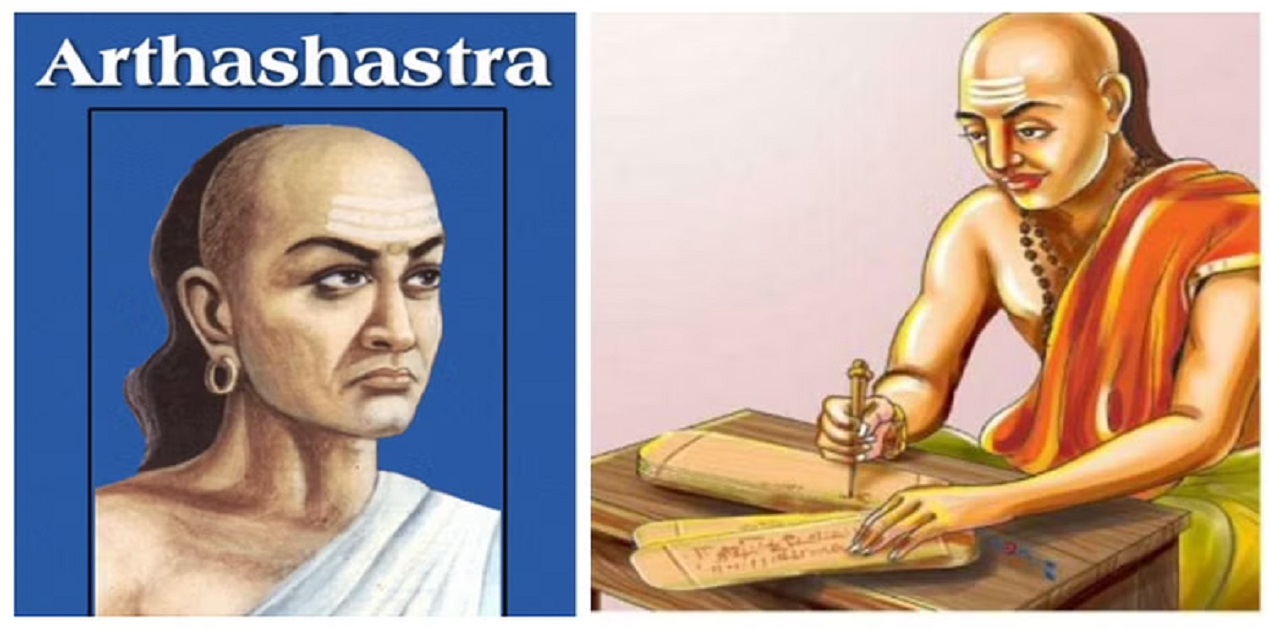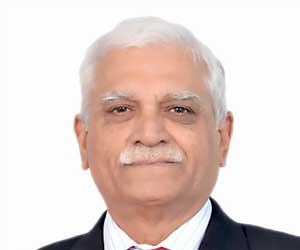The Genesis
On 14 April 22 the BBC reported Sri Lankan Prime Minister telling the Army “Do whatever is necessary to restore order”. The Sri Lankan President Gaotabaya Rajapaksha had fled the country. Inflation reached 50% and most essential goods including medicines ran out of supply[1] Pakistan our neighbour to the West is on the brink waiting a repeat of Sri Lanka. Bangladesh too is at the doors of epidemic of economic meltdown. The common thread in all these cases is poor political economy that led to huge debts beyond the capabilities of these nations to service.
The ripple effects in India were strong. The main cause of Sri Lankan crisis was attributed to what is commonly known in India as ‘freebie culture’. The Supreme Court of India while taking note of this culture felt that India may be ‘heading towards economic disaster’.[2] The Reserve Bank of India expressed concern on the precarious state of economies of several Indian states[3]. The Indian Prime Minister warned the states against ‘rewari culture’-a term he coined to describe freebies.[4] Since, first week of August 22 there has been a continuous debate on this issue. Economic Times (8 August 22, Dhiraj Nayyar) felt that freebies are essential part of political economy, the undesirables need to be separated from what is necessary.[5] The Hindu (8 August 22, Nitsula Hebber) quoted a politician saying that there is difference between freebies and welfare schemes. The latter are for improving human capital, living standards and state GDP[6].
The debate has now entered the Supreme Court of India with the Central Government in favour of curbing the culture of freebies and some of political parties in the opposition arguing for the status quo. Whatever decisions are taken by the top court after hearing all concerned will change a lot in India’s political economy. Our objective here is to look at the national and global trends and analyze these through the prism of Kautilya’s Arthashstra.
National Trends: Debt to GDP Ratios of States
Macro parameters relating to the ill effects of freebie culture are reflected in debt to GDP ratio, percentage of total expenditure on revenue account, quantum of tax collected from own resources and debt sustainability indicators. The RBI selected ten states to flag the criticality of economic health of states. These include Madhya Pradesh, Rajasthan, Bihar, Andhra Pradesh, Jharkhand, Haryana, Uttar Pradesh, West Bengal, Kerala and Punjab. Four of these states- Rajasthan, West Bengal, Punjab and Kerala spend more than 90 percent of their respective earnings on revenue account leaving very little for development. This – as per RBI, reflects poor expenditure quality. Punjab, Bihar and Uttar Pradesh tax collections are less than 50% of their respective total earnings; rest comes from the central grants. Bihar depends on 75% of funds from central grants; its own tax collection is less than 23%. West Bengal, Punjab, Rajasthan, Andhra and Bihar are worst off in terms of gross fiscal deficit as percentage of Gross State Domestic Product (GSDP) as also debt as percentage of GSDP. As regards debt sustainability Bihar (-3.4), Kerala (-5.4), Punjab (-2.4), Rajasthan (-11.2) and West Bengal (-10.5) are worst off. In case of the last three there is consistent deterioration of these indicators[7].
Why has Supreme Court of India taken cognizance of these economic factors in the country? Probably because in their opinion these negative indicators impact the citizen? One indicator that can corroborate this fear is GSDP growth rates and GSDP per capita. If we look at the GSDP growth rates of states for the year 2019-20, almost all the states mentioned in the RBI report have registered higher growth rates compared to the national GDP growth rate a (4.04%)[8]. In case of GSDP per capita statewise except for Rajasthan, West Bengal, Madhya Pradesh, Uttar Pradesh and Bihar all the other states on the list show higher GSDP per capita than the national average of Rs 151760/- with Haryana topping the list at 290712/- per capita[9]. Is it possible that in case the states shun freebie culture their growth parameters will be much higher than what these are at present? Alternatively, can the extra debt lead these states to the situation where Sri Lanka is today? Till very recently Sri Lanka was hailed as an efficiency driven economy much ahead of India that was bracketed as factor driven economy[10]. Today India is still surging ahead- thanks to better fiscal discipline and Sri Lanka is looking down the barrel with its ‘please all ‘political economy.
Debt to GDP Ratio: Global Trends
As per world bank report 2022- ‘Debt to GDP ratios by countries’ a ratio more than 77 percent is considered prone to risks of default and economic disaster. However, 29 countries in the world today have crossed this threshold and seven countries are in close proximity of this mark. Japan for instance carries a ratio of 266%, the US debt to GDP ratio is 128%, for Greece it is 206%, Italy 156%. The countries that are doing well in this category include Afghanistan: 3.2%, Russia: 17.8%, Estonia: 18.2%. In South Asia India as per the report is in the safe zone with 69.62%. Sri Lanka and Pakistan have both crossed the red line with 86.62% and 84.80% respectively[11].
In case a country is able to pay back the interest on the debt without default its economy is considered stable. Default on repayment can lead to a situation witnessed in Greece a few years back. Even in some of the richest countries like the US, Japan, the UK (debt to GDP ratio 80.7%) there appears to be likelihood of recession. Since these countries have global footprint any negative economic trends in these will have ripple effect around the world.
The debt to GDP ratiosof many of the leading developed countries (the US, Japan, Singapore, the UK, France) are much above the redline. The sample almost suggests that high debt to GDP ratio is an essential condition for leapfrogging into the big league. This inference will be inherently wrong. The high ratio in all these cases is precariously balanced by many other factors. As an example, bulk of the US external debt is in the form of bonds (treasury bills), that run in to trillions of dollars. Japan holds 1.21 trillion worth of US bonds, followed by China (981 billion), UK (634 bn), Singapore (294bn), Cayman Island (293bn), Taiwan (231bn) and so on. Most of these countries have very strong security, trade (or both) ties with the US. Taiwan and Japan have close security and trade links with the US. China is a competitor and if China plans to sink the US economy by just leveraging the US bonds she holds it will be a far cry considering the US clout and military presence. However, Sri Lanka with the ratio at 86.8% and Pakistan at 84.80 % lack that clout.
Interestingly Harvard economists Carmen Reinhart and Kenneth Rogoff painted a very grim picture of world economy which is increasingly based on high debt. Three years later the findings were faulted on the premise of coding errors and choice of selective data!![12] So, the developed world led by the US would prefer to ignore high debt to GDP ratio. The new monetary theory (propounded by the West) considers that a nation can print as much currency as it likes. Hence there is no need to worry about public debt! Fortunately, India does not subscribe to this ‘infinite printing of currency’ and has kept the debt to GDP ratio much short of the 77% threshold.
Common Threads of Criticism for Freebie Culture leading to dangerous debt to GDP Ratios
Some of the criticisms against this culture based specifically on the case studies of Sri Lanka, Venezuela and some other Latin American countries are as under:
- Corrupt governance due to leaders contesting elections on the lure of freebies.
- National treasuries get depleted due to unrealistic subsidies and low tax collection.
- The nation under debt loses freedom of decision-making.
- Due to low capital investment -infrastructure creation, maintenance, capacity building activities and productivity of human capital suffer setbacks.
- Tax regimes become lopsided as exemptions are given to lobbies and different power centers for electoral gains without due macro-economic consideration.
- Large scale shortages, sky rocketing inflations jeopardizes survival of ordinary citizens.
- Long term growth is sacrificed for short term electoral gains
Political Economy through the Prism of Kautilya’s ’Arthashastra
Kautilya (real name Vishnugupt) wrote the treatise around 300 BC (as per Indian researchers). It is based on an ideal state- imagined by Kautilya. Many parts of the script flow out of Atharveda (one of the ancient scriptures written by the Indian sages much before Arthashastra).[13] It is safe to believe that Chandraguta -the Mauryan King enthroned by Kautilya by defeating Nanda ( King Dhanananda) empire, practiced the doctrines of Arthashastra. It will be interesting to look at the salient aspects of Arthashastra relevant to our study.
The supreme leader of the people was the king ordained to be devoid of desire, anger, temptation and lust. His only role was to serve his people with total dedication, without favour, fear, greed. A king who did not have the trust of his people was to be removed[14].
The ‘treasury’ happened to be the most important organ of the state second only to the king and the people. It contained gold, silver, precious metal and precious stones of very high value besides grains, fruits, animals, forest produce of value and so on. Its location, construction, protection and maintenance were given very high priority. Very stringent punishments were legislated for people or officials who caused harm or stole from the treasury. As per Kautilya a king with depleted treasury eats into the very vitality of the citizens. The King was expected to keep sufficient reserves in the treasury to cater for famine and other unforeseen situations. (Rangarajan – refer end note 14)
Income to the treasury came from a large number of taxes from various economic activities like agriculture, trade, manufacturing, skill-based services, roads, waterway, bridges, forest taxes. All taxes were decided in consultation with the people so that conflicts between the king and the tax payers were avoided. The king had no authority to reduce or exempt taxes for anyone except those who were exempted by the law. (Tiwari, refer end note 13)
The tax base was very wide, but the quantum of taxes was low. The agriculture tax was one sixth of the produce. Taxes from the traders were one fifth of the profits. Thus, the maximum tax remained between 17 to 20% of the income. Tax from profits from imported goods was five times that of trade of goods within the country. Penalties for under invoicing, hiding goods or profits were very high. These ranged from five to eight times the legitimate tax. Those who paid taxes regularly were honoured and protected. A farmer who paid taxes regularly was awarded additional land. However, this award did not pass on to his next generation. Similarly, traders who paid regular and high volume of taxes were protected, honoured and awarded prestigious positions in the state. New farmers who lacked the skills and adequate resources for farming were helped by the king for the first three to four years by providing them the resources for agriculture. They were exempted from paying taxes. The king was duty bound to buy one fourth of their produce at market price. After three to four years these farmers were expected to be on their own and all help/exemption from the state ceased. If these farmers failed to learn they were punished. (Rangarajan, Tiwari)
The king was duty bound to protect, train skilled workers who were seen as wealth creators for the state. Workers involved in manufacturing a product (gold, precious stones, other equipment) completing a project were entitled equal amount of remuneration as per the work performed. In case a worker fell sick or absented himself and someone else performed his task the substitute was to get the entire amount due to the worker who absented himself.
An elaborate network of tax collectors- that included revenue and judicial officers was involved in ensuring complete tax collection. Any one entrusted with the task of tax collection found spending more than his income was considered to have stolen from the treasury. Strict punishment was awarded to him. (Tiwari)
A number of citizens were exempted from paying taxes as per the law. These included the sanyasis, destitute, old widows with no source of income, physically challenged girls, temple priests with no source of income, women with easy virtue once they become old (ganikas), criminals who lost their livelihoods and are old. (Tiwari)
The king was duty bound to spend on improvement of health, cleanliness and building/maintenance of hospital. Expenditure on health care and cleanliness was termed as anugrah and that spent on dispensaries, hospitals was termed as parihar. Both these expenditures were considered essential for higher productivity of the state instrumental in increasing the income for the treasury. (Tiwary-61) Other essential expenditure by the king was on creation and maintenance of state infrastructure (roads, waterways, rest houses for the citizens and sanyasis, forts for security, maintenance of strong armies, protection of forests, flora and fauna).
A citizen was defined by Kautilya as one involved in management and administration of the state. He laid down distinct duties of the citizens. He was expected to help the tax collection department, identify enemy spies, fake sanyasis and those involved in practices contrary to the laid down norms (dharma) of the state. He would inform the king if some fake sanyasi (pakhandi) took refuge in dharmshala (rest house) meant for the sanyasis, He would also inform the king on smuggling and activities around the sensitive places of military importance. Tiwari (Tiwari Pp176)
Conclusion
In conclusion it may be prudent to check what the political economy enunciated by Kautilya’s Arthashastra achieved for India. Mr. Mathew Joseph senior consultant Indian Council of Research for International Economic Relations (ICRIER) writes in ‘History of Ancient Indian Economy’ that ‘The Maurya Empire (c321BC to 185 BC) laid the foundations of Indian economy in such a manner that for the next 1500 years India generated huge wealth estimated to have the largest economy of ancient medieval world accounting for one third to one fourth of world’s wealth’[15]. This fact is borne out by Angus Maddison study of the world economy. In 1600 AD India had a GDP of 74250 million international dollars compared to 6007 million international dollars of the UK, by 1947 the equation reversed with Britain at 314969 million international dollars and India at 255852 dollars (Angus Maddison Pp 112)[16].
End Notes
[1]https://www.bbc.com/news/world-61028138
[1]https://www.indiatoday.in/law/story/heading-towards-economic-disaster-supreme-court-freebie-culture-india-1983384-2022-08-03
[2]https://www.rbi.org.in/Scripts/BS_ViewBulletin.aspx?Id=21070
[3] https://www.thehindu.com/opinion/interview/revri-debate-there-is-a-difference-between-freebies-and-welfare-says-ysr-congress-mp-vijay-sai-reddy/article65761349.
[5]https://economictimes.indiatimes.com/opinion/et-commentary/freebie-debate-continues-amid-economic-crises-in-indias-neighbourhood/articleshow/93438204.cms
[6]https://www.thehindu.com/opinion/lead/making-sense-of-the-freebies-issue/article65717382.ece
[7]Ibid 3
[8]https://statisticstimes.com/economy/india/indian-states-gdp-growth.php#:~:text=During%20Period%202012%2D19%2C%20Mizoram,between%20fiscals%202013%20and%202019
[9]https://statisticstimes.com/economy/india/indian-states-gdp-per-capita.php
[10]https://reports.weforum.org/global-competitiveness-report-2014-2015/methodology/?doing_wp_cron=1660490691.2740280628204345703125
[11]https://worldpopulationreview.com/country-rankings/debt-to-gdp-ratio-by-country
[12]https://www.investopedia.com/terms/d/debtgdpratio.asp
[13]Shyamlesh Kumar Tiwari , G P Shastri Chaukhamba Surbharti Prakashan Varanasi , 2020, ISBN 9789386554000, Daryaganj New Delhi
[14]Rangarajan L N, Kautilya The Arthashastra , Penguin Books , Random House India ISBN 9780140446036
[15]https://cgijeddah.gov.in/web_files/267622636-History-of-Indian-Economy.pdf
[16]https://theunbrokenwindow.com/Development/MADDISON%20The%20World%20Economy--A%20Millennial.pdf
(The paper is the author’s individual scholastic articulation. The author certifies that the article/paper is original in content, unpublished and it has not been submitted for publication/web upload elsewhere, and that the facts and figures quoted are duly referenced, as needed, and are believed to be correct). (The paper does not necessarily represent the organisational stance... More >>
Image Source: https://gumlet.assettype.com/nationalherald%2F2021-08%2Fcaf84209-77a6-4139-a906-7497cf081428%2FChanakya_collage.jpg?rect=0%2C0%2C3239%2C1822&auto=format%2Ccompress&fmt=webp&w=750&dpr=1.0











Post new comment